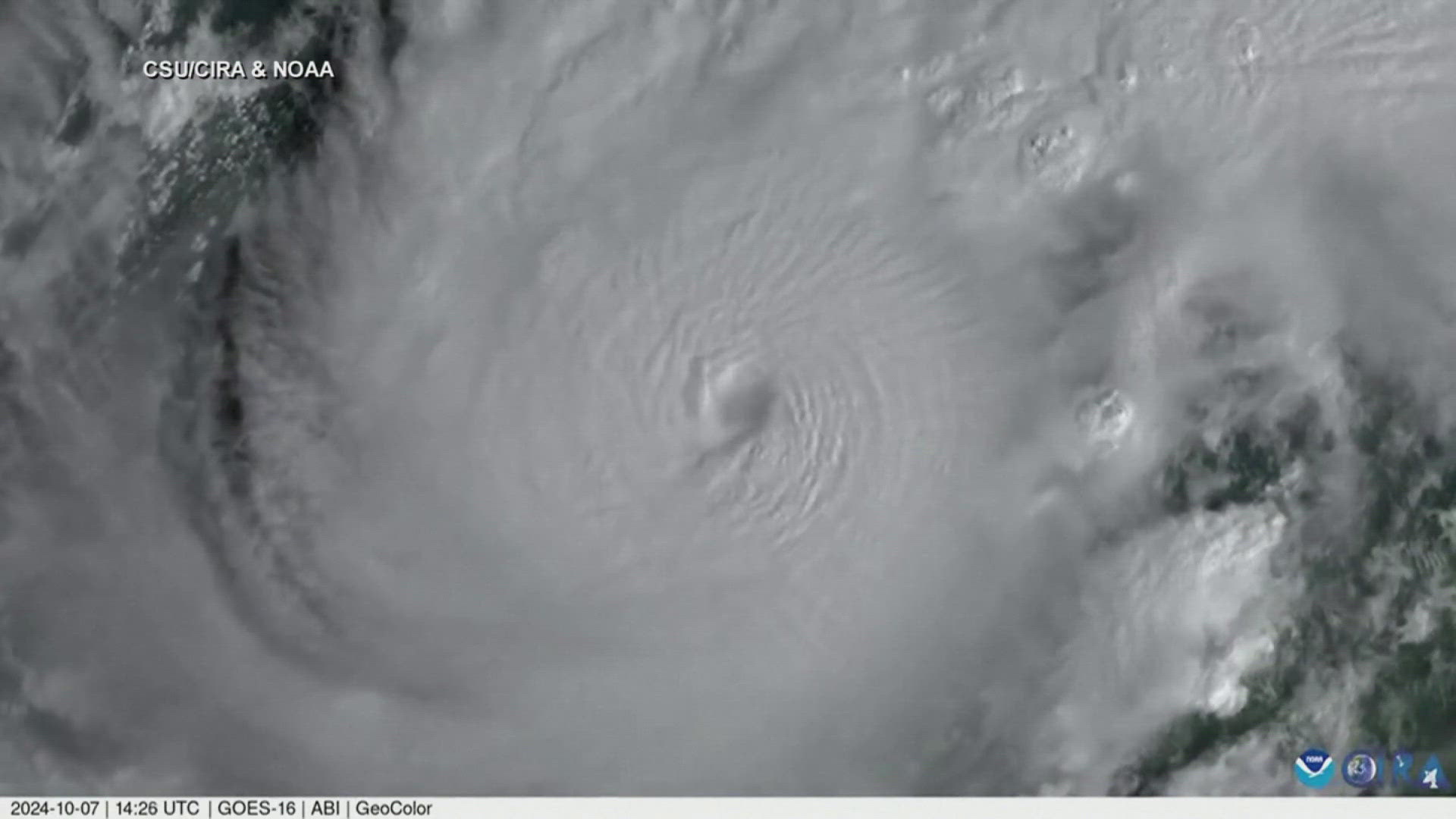LOUISVILLE, Ky. — There are many different winter weather alerts that the National Weather Service (NWS) can issue. It's important to know the differences between the alerts so you can be better prepared for the impacts.
Wind Chill Advisory and Warning
Wind chill temperatures can get dangerously cold. As the temperatures drop and the wind picks up, the colder the air will feel.
A wind chill advisory is issued when wind chills are between -15°F to -24°F. If the wind chill is -25°F or colder, a wind chill warning will be issued.
If exposed, hypothermia or frostbite could occur. You should cover all exposed skin, dress in multiple layers, and limit time outdoors.

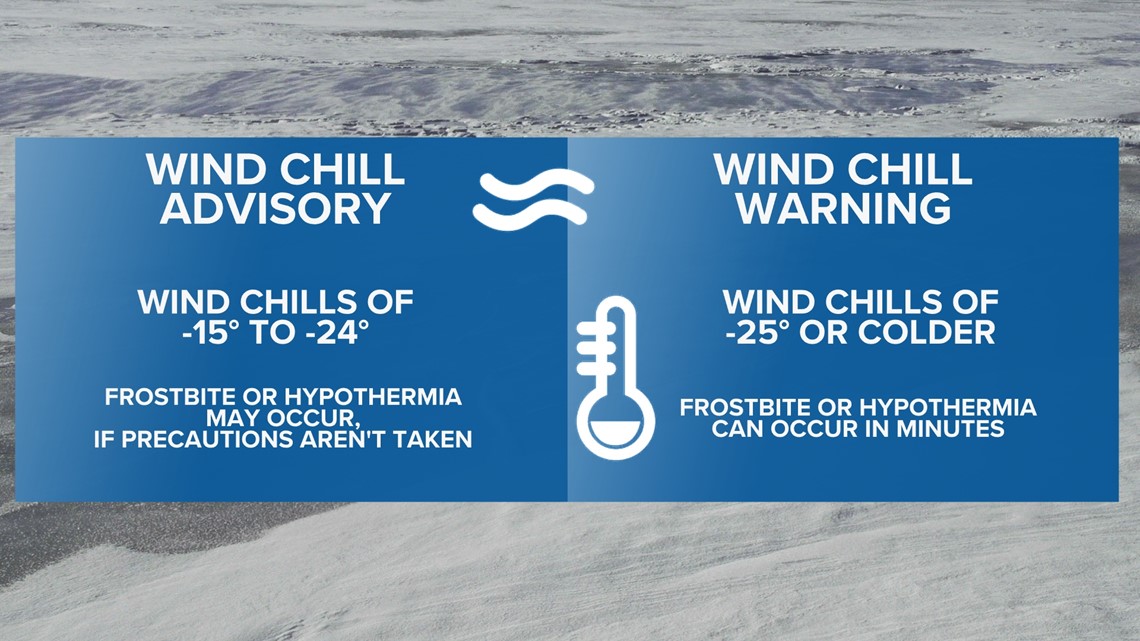
Winter Storm Advisory and Warning
A winter weather advisory will be issued if a winter storm is expected to bring any or a combination of the following: less than six inches of snow, less than a quarter of an inch of ice due to freezing rain, and/or blowing snow causing a drop in visibility due to wind speeds less than 35 mph.
Major impacts from a combination of winter weather types or six inches or more of snow will warrant a Winter Storm Warning from the NWS.


Ice Storm Warning
An ice storm warning will be issued if a storm is expected to bring a quarter of an inch or more of ice accumulation. Ice can create impossible driving conditions and power outages.
Snow Squall Warning
While it's a rare occurrence for Kentuckiana, the NWS can issue a snow squall warning.
In a short amount of time, a snow squall produces bursts of moderate to heavy snow and wind, which leads to white-out conditions. Roads can quickly become slick due to freezing road temperatures or flash-freezing conditions as temperatures drop quickly.
It can be dangerous or even life-threatening, especially for motorists, and has led to pile-ups.

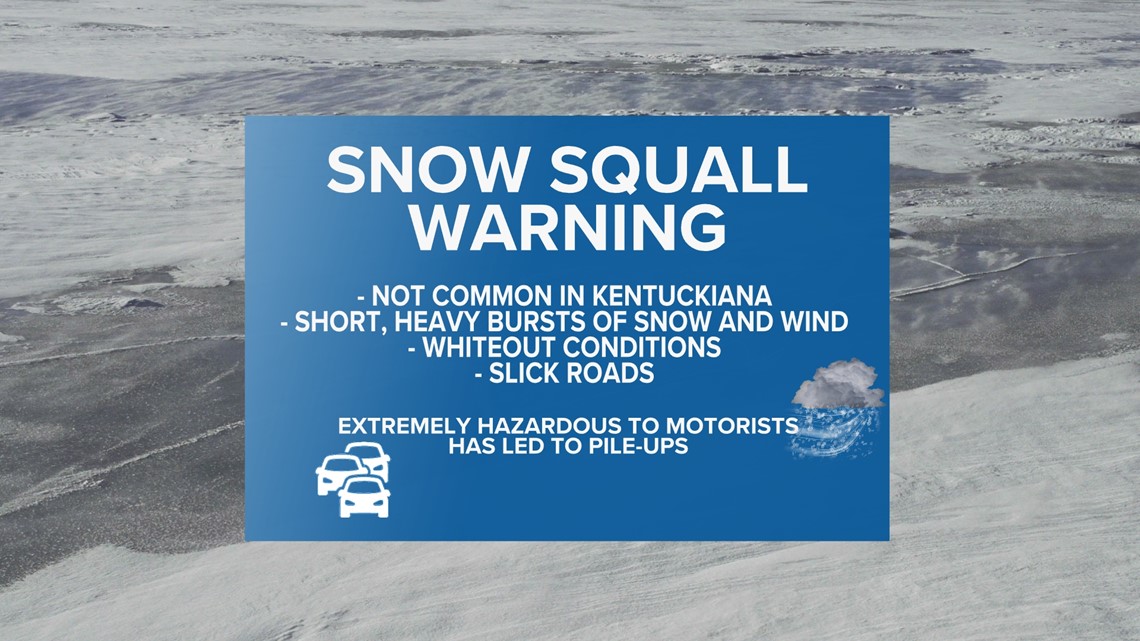
Blizzard Warning
A blizzard warning isn't issued based on snow amounts. Instead, it's due to wind speeds or gusts and reduced visibility from falling or blowing snow. So technically, it doesn't have to be snowing during a blizzard - it can blow snow that has already fallen on the ground.
Wind speeds or gusts need to be at least 35 mph for at least three hours. Also, the visibility reduces to less than a quarter of a mile due to snow.
If precautions aren't taken, blizzards can be life-threatening because of snowdrifts and the lack of visibility.
Motorists can become disoriented and stranded due to snow and/or the lack of visibility. If you become stuck in a blizzard and are not near an area to seek shelter, stay with your car.
Tying a bright piece of fabric to the outside of your vehicle can help rescuers find you. Also, make sure your exhaust pipe isn't covered will snow. If it is, fumes can back up into the vehicle.

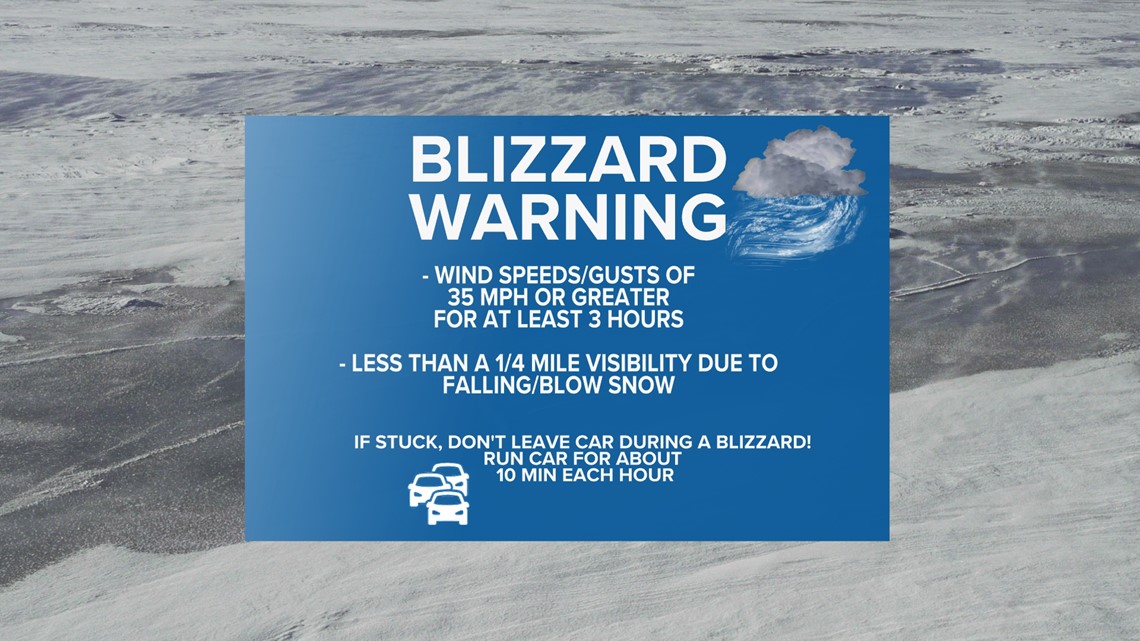
Be Prepared
Just like preparing for severe weather, it's just as important to be prepared for any type of winter weather.
Make sure you have enough food, water, and supplies for at least three days. In your home and car, have a first aid kit, flashlights, batteries, and blankets.
Put a shovel and cat litter or sand in your car to help out if you get stuck in the snow. If possible, have an alternate source of heating for your home.
While generators are great, be careful when using them. To prevent carbon monoxide poisoning, do not use them inside the home or in the garage. Place the generator at least 20 feet from the home with the exhaust pointing away from doors and windows.

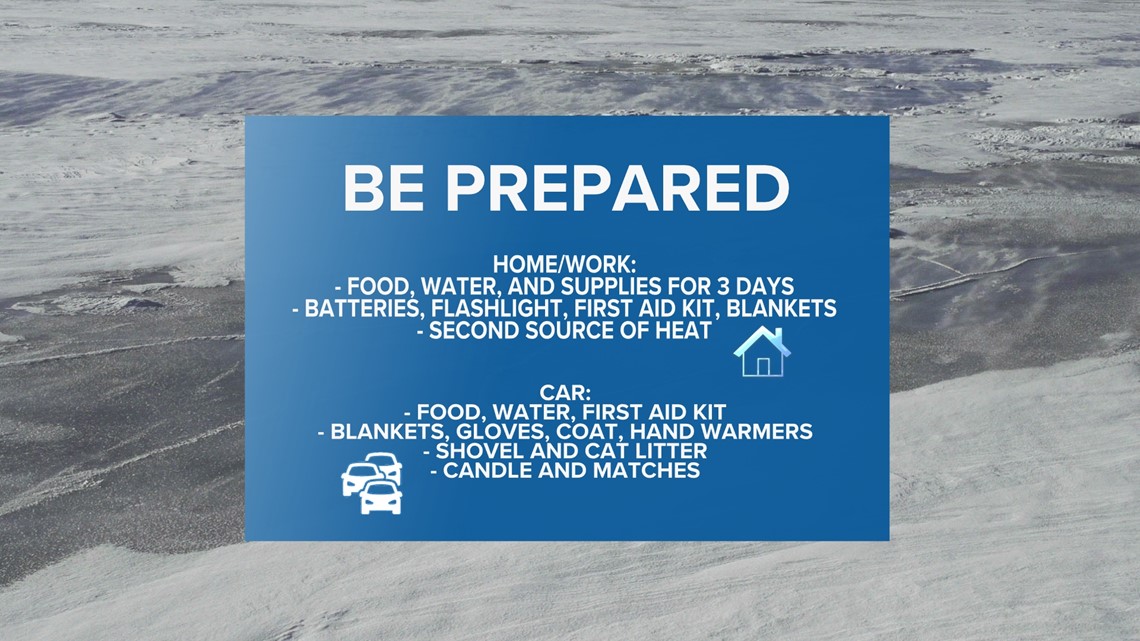
Contact meteorologist Chelsea Smith at csmith@whas11.com. You can follow her on Facebook or Twitter (@ChelseaSmithWX).
Make it easy to keep up-to-date with more stories like this. Download the WHAS11 News app now. For Apple or Android users.
Have a news tip? Email assign@whas11.com, visit our Facebook page or Twitter feed.



